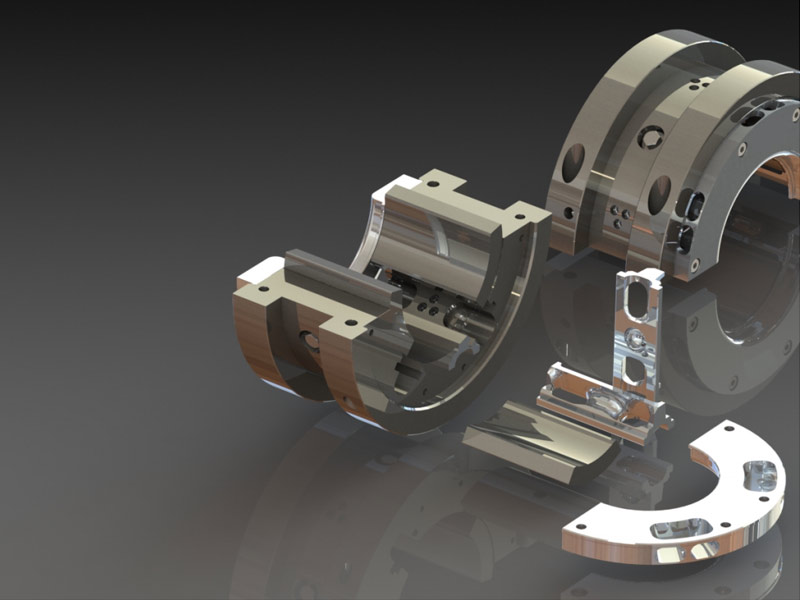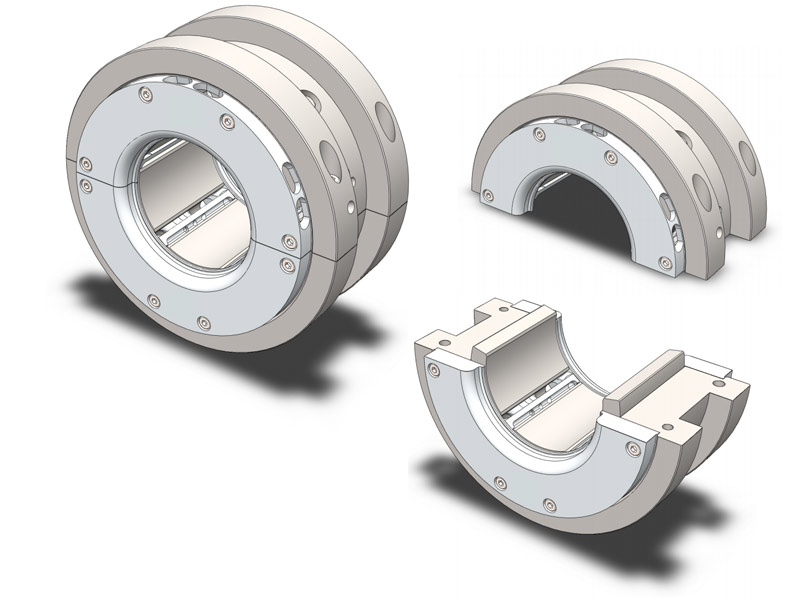

Mit unseren individuellen technologischen Lösungen verfolgen wir das Ziel, die Produktführerschaft unserer Kunden zu unterstützen. Unser Innovationsschwerpunkt liegt auf Energieeffizienz sowie Präzisions- und Komfortsteigerung der Produkte unserer Kunden.
Die Innovationsfähigkeit der Brutscher Maschinenbau beschränkt sich allerdings nicht nur auf Produkt- und Technologieentwicklungen, sondern ist in allen Bereichen des Unternehmens verwurzelt.
Wir sind davon überzeugt, dass wir unsere Innovationskraft durch den Blick über den Tellerrand noch weiter stärken können. Deshalb vertrauen wir nicht nur auf das Wissen und den Erfahrungsschatz unserer Teams, sondern arbeiten auch eng mit externen Partnern, Forschungsinstituten, oder Start-Ups zusammen.


Radialkippsegmentlager dienen der Lagerung hochtouriger Wellen und Rotoren in Turbinen, Getrieben, Verdichter, Generatoren, Turbolader und elektrischen Maschinen. Stetig größer werdende Leistungsdichten im Maschinenbau stellen immer höhere Anforderungen an die Leistungsfähigkeit und Betriebssicherheit moderner, hydrodynamischer Radialkippsegmentlager. Entscheidende Kenngrößen sind hierbei die im Betrieb resultierende Lagertemperatur und die benötigte Schmierölmenge des Radialkippsegmentlagers.
Auf Basis aktuell üblicher Radialkippsegmentlager wurde von der Brutscher Maschinenbau GmbH ein ins Lager integriertes Ölleitsystem entwickelt, welches zulaufendes, kaltes Schmieröl und ablaufendes, warmes Schmieröl getrennt voneinander reguliert.
Das Ergebnis ist ein Gleitlagersystem mit außerordentlichem Leistungsniveau und Entwicklungspotential. In Prüfläufen konnte im Vergleich zu aktuell verwendeten Lagern der Marktbegleiter die Ölmenge um über 50% reduziert werden.
Auf Basis aktuell üblicher Radialkippsegmentlager wurde von der Brutscher Maschinenbau GmbH ein ins Lager integriertes Ölleitsystem entwickelt, welches zulaufendes, kaltes Schmieröl und ablaufendes, warmes Schmieröl getrennt voneinander reguliert.
Durch das BM Ölleitsystem:
Ihr Projekt aus einer Hand: Brutscher Maschinenbau liefert Lösungen von der Entwicklung bis zur Montage
Strategischer Partner bei komplexen Aufgaben und Sonderlösungen für alle Industriezweige
Moderne und von Innovation getriebene Produktion in Deutschland
Hersteller für: Turbomaschinenkomponenten, Getriebekomponenten, Ersatzteilservice, Prototyping, Reverse Engineering, Gleitlager, RKS, Kippsegmentlager, Lagerschale, Lagerhersteller, Stopfbüchse
Brutscher Maschinenbau GmbH
Mittagstr. 21,
87527 Sonthofen, DE
Tel.: 08321 607852 3
Fax: 08321 607852 8
E-Mail: info@brutscher-maschinenbau.de